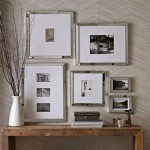Ralph Lauren Mirror: A Reflection of Style and Technology
The Ralph Lauren Mirror represents a significant intersection of fashion retail and technological innovation. This smart mirror, developed in partnership with Oak Labs, transcends the traditional changing room experience, offering customers a personalized and interactive environment to explore and purchase Ralph Lauren products.
Initially piloted in select Ralph Lauren flagship stores, the mirror has since been expanded to various locations, reflecting the brand's commitment to enhancing the customer journey. Its core functionality lies in its ability to recognize the items brought into the fitting room via RFID tags. Once identified, the mirror displays the product on its screen, providing customers with detailed information such as available sizes, colors, and styling suggestions.
This eliminates the need for customers to physically search for alternative sizes or colors, streamlining the process and freeing up sales associates to provide more focused assistance. Customers can use the mirror's touchscreen interface to request different sizes or colors, which are then delivered directly to the fitting room by store personnel.
Beyond inventory management, the Ralph Lauren Mirror enhances the customer experience through several key features. Ambient lighting control allows customers to adjust the lighting within the fitting room to mimic various environments, such as a brightly lit office or a dimly lit restaurant. This feature allows for a more realistic assessment of how an outfit will look in different settings.
Language options cater to a diverse clientele, making the experience more accessible and inclusive. Customers can select their preferred language for the mirror's interface, ensuring clear communication and ease of use. This feature is particularly beneficial in international retail locations.
Integration with store stylists is another significant aspect of the mirror's functionality. Customers can request assistance from a stylist directly through the mirror's interface. This allows for personalized style advice and recommendations tailored to individual preferences and needs. The stylist can then bring suggested items directly to the fitting room, further enhancing the personalized experience.
The technology behind the Ralph Lauren Mirror is a complex interplay of hardware and software. RFID technology plays a crucial role in item recognition, allowing the mirror to identify and display product information instantly. The touchscreen interface facilitates customer interaction, providing a seamless and intuitive user experience.
The sophisticated software integrates various functionalities, including inventory management, lighting control, language options, and communication with store personnel. This integrated approach allows for a dynamic and responsive environment that adapts to individual customer needs.
From a business perspective, the Ralph Lauren Mirror offers several advantages. It increases sales conversion rates by providing customers with a more engaging and informative shopping experience. By streamlining the fitting room process, the mirror reduces wait times and frees up staff to focus on customer service.
Data collection is another significant benefit. The mirror gathers valuable insights into customer preferences and buying habits. This data can be used to inform inventory decisions, optimize product offerings, and personalize marketing strategies. Understanding customer behavior allows Ralph Lauren to tailor its offerings more effectively and enhance the overall customer experience.
The introduction of the Ralph Lauren Mirror signifies a broader trend within the retail industry towards the integration of technology to enhance the customer experience. This reflects a growing understanding of the importance of personalization and convenience in the modern retail landscape.
While the initial investment in such technology can be substantial, the long-term benefits, including increased sales, improved customer satisfaction, and valuable data insights, make it a compelling proposition for retailers seeking to remain competitive in an evolving market.
The Ralph Lauren Mirror serves as a prime example of how technology can be seamlessly integrated into the retail environment to create a more engaging, personalized, and efficient shopping experience. It reflects the brand's commitment to innovation and its understanding of the evolving needs of the modern consumer.
By leveraging technology in this way, Ralph Lauren is not only enhancing the in-store experience but also gathering valuable data that can be used to further refine its offerings and strengthen its connection with its customers.
The continued development and refinement of technologies like the Ralph Lauren Mirror promise to further transform the retail landscape, blurring the lines between the physical and digital worlds and creating a more seamless and personalized customer journey.

Estienne Mirror

Ralph Lauren De Brass Mirror Bloomingdale S

Ralph Lauren One Fifth Mirror Bloomingdale S

Massive Mahogany Mirror By Ralph Lauren Circa Late 20th Century John Gregory Studio Elias Guerrero Lighting

Henredon Ralph Lauren Large Carved Wood Frame Antique Mirror

Ralph Lauren Venetian Mirror Bloomingdale S

Ralph Lauren Mahogany Wall Mirror Chairish

Ralph Lauren Hand Carved Burnished Gold One Fifth Wall Mirror Chairish

Ralph Lauren Mahogany And Rattan Wall Hanging Over Mantel Mirror Bevelled Glass 48 At 1stdibs

Ralph Lauren Home La Boheme Mirror Simon S House








